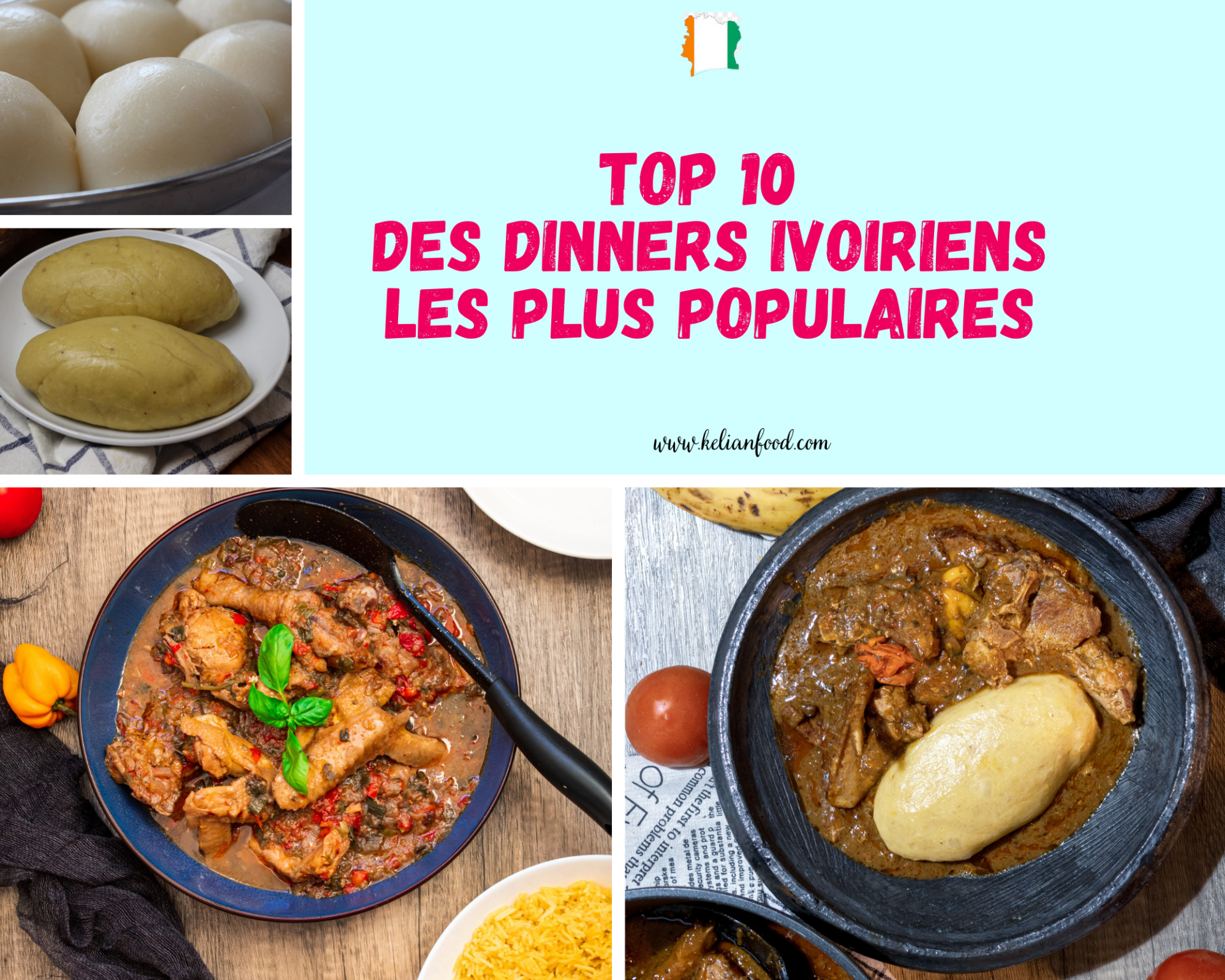
Top 10 most popular Ivorian house dishes
I continue my mini article of article on the Ivorian food with this 2nd part : the top 10 dinners or the most popular Ivorian house meals. Here I am going to talk about the popular dishes that we cook in Ivorian households in noon or in the evening ! So if you arrived on this article by chance knows that there is a first part ( top 5 of the most popular Ivorian breakfasts) and he will have a 3rd on the Ivorian street food. Well, let's go ...
10. Sokossoko of beef
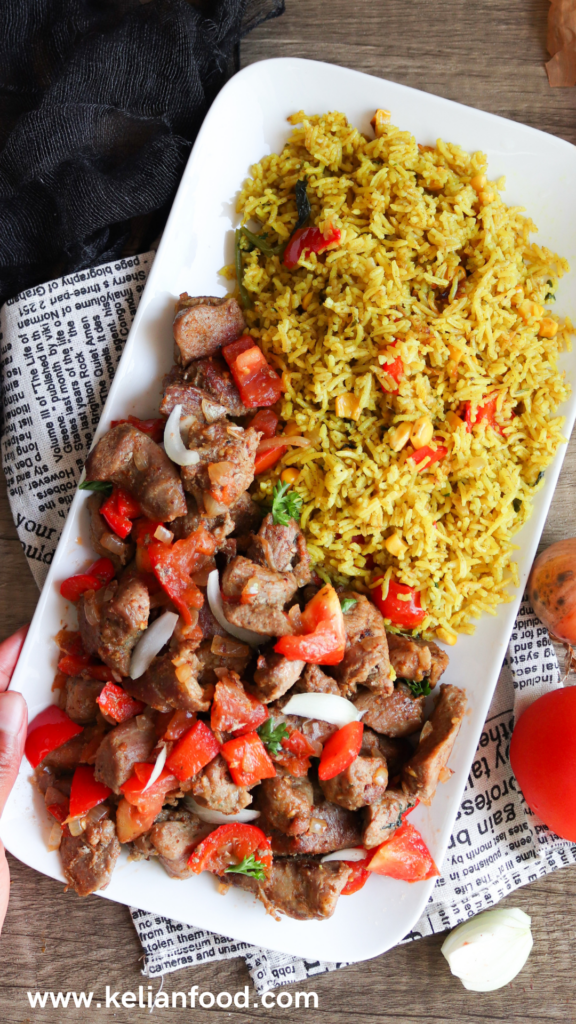
The beef sokossoko is a very simple and easier to make . This is the kind of dish that we make when you are in a hurry. In short when you don't have too much time 🙂
It is made with beef as its name already suggests 😅, tomatoes, onions, and garlic . For the recipe, the principle is quite simple to tell the truth, after having fried the meat cut into small pieces, you add the onions, then the tomatoes and a little water. In any case, I would come back to this recipe in a next post 🙂
The Sokossoko is generally accompanied with rice or attiéké. You can also use another meat for the recipe, for example in the photo I use the turkey and it was still as delicious!
9. Biékòsseu
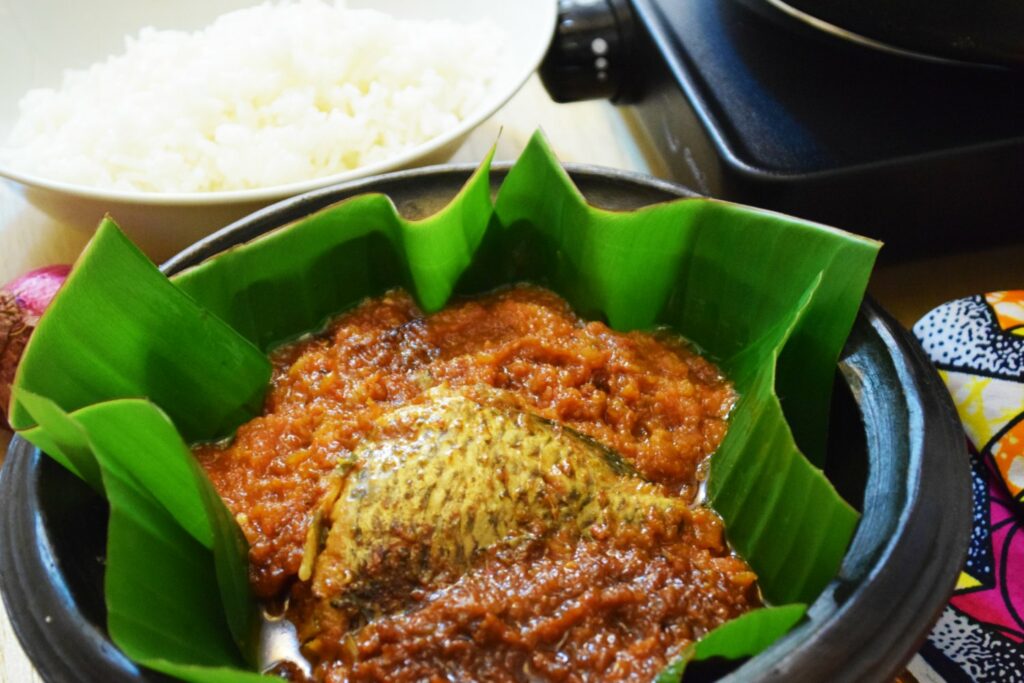
The word Biékòsseu means Biékò: Pepper and SSEU: water from the Akyés, a people from southern Côte d'Ivoire, precisely in the Mé region. It would then be " pepper with the sauce ", if we want to literally translate 😅
So in fact it is two small sauces made separately but at the end served together. On the one hand we have the sauce and on the other hand " the pepper or a spicy sauce ".
The sauce is made with fish and other ingredients such as fresh tomatoes, onions, chilli, and the tomato concentrate. The cooking of the fish is done in a foil, that is to say in the banana leaves . Suddenly, after having crushed all the ingredients together, we wrap it all with fish in the leaves for cooking.
For the 2nd part of the recipe: “ For the chilli” you will need African eggplant , peppers, onion . Just boil everything together and cook with water for a few minutes. As this soup is accompanied with Foutou banana, it seems that the taste for chili would be better if we replace water with the cooking water of plantains. 😄
Personally I have not yet had to eat this dish. I imagine it must be very delicious. The recipe and the process is very similar to the Liboké , one of the most popular dishes in the Congo . Except that there is no spice next to it!
8- Gouagouassou sauce
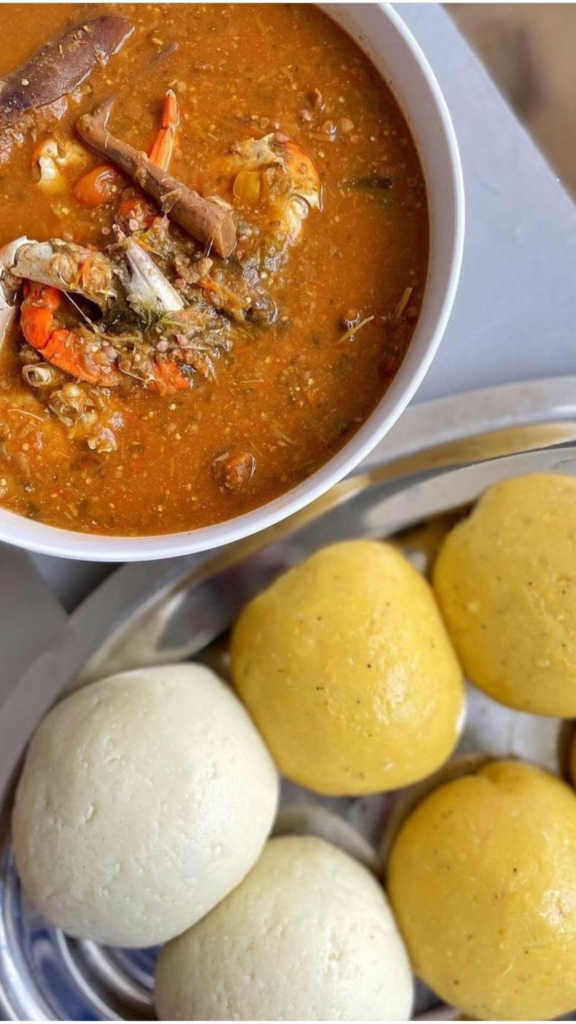
According to Wikipedia the term “Le Gouagouassou” is a term of Ivorian cuisine designating the mixture of two ingredients or two sauces to obtain a new sauce.
But I also read somewhere that the name "Gouagouassou" comes from the expression baoulé " his tro gouasso ", which means " pour the sauce over the foutou ", suddenly I am a lost 😅! So if there is an Ivorian who goes through it, I would be delighted that he could enlighten me on the real definition in comment 😊
But hey what I am still on is that: the Gouagouassou sauce would come from the Baoulé . 😎
The list of ingredients for the sauce is still long enough. It is a mixture of fresh okra, gnangnan, African eggplant, AKPI (Ndjansang in Cameroon), fish or meat and all other usual vegetables such as tomatoes, onions and others.
Something tells me that it must be really delicious with all these mixtures of different flavors. Miammmm 😋
Gouagouassou sauce is generally accompanied by Foutou banana
7- Gnangnan sauce

To be honest with you, I had not yet heard of this sauce before doing the research for this article 😅. The Gnangnan sauce is so called because of a Far ingredient: bitter eggplants still called gnangnan in Baoulé
Gnangnan is one so an African vegetable if I can call it like that. I'm not talking about white African eggplants here that enter the Akpessi huh recipe? No, here it is a type of eggplant with very small seeds . It comes from a shrub called Solanum Torvum . Besides here is a photo that I could find online 😊.

Gnangnan therefore brings associates with the other ingredients in the sauce (that is to say tomatoes, onions and others) a pleasant bitterness . It is a very popular sauce in Côte d'Ivoire, not only because of its very particular taste, but also because it brings medicinal properties . It is even said that this dish would have anti-pale virtues! ☝🏿
This sauce is generally accompanied with fuctou of yam , and in the sauce you can add chicken, fish .. in short what you want.😋
6- Djoumglé sauce

The word " djoumglé " simply designates the dry Gombo . It is therefore a sauce made with shattered tutorial powder and not fresh okra as we are used to. To obtain the “ djoumglé ”, you just have to cut the fresh okra in small pieces, dry well and then make it run in a mortar or a dry mixer! Powder is also easily sold in markets in Africa. Even here in Germany, I have already had to see the dry Gombo powder in Afro-shops sold in small sachet 😊.
Djoumglé sauce is not at all difficult to cook. Apart from the dry Gombo as an ingredient, you will have to add other vegetables such as tomatoes, and onions and others. You can decide to add either meat or fish , or even shrimp with your sauce. It depends on your preferences!
The sauce is accompanied very well with the couscous of corn, rice, placali or even foutou . This dish is really much appreciated by the Ivorians, and is from the Baoulé peoples , from the center of Côte d'Ivoire.
5-Placali Gombo sauce (or Kopè sauce )
So the Gombo sauce or Okra signs is a sauce that we no longer present. I am sure that everyone here has already heard of it, since it is known in almost all African countries 🤗! So I'm going to focus on the placali.
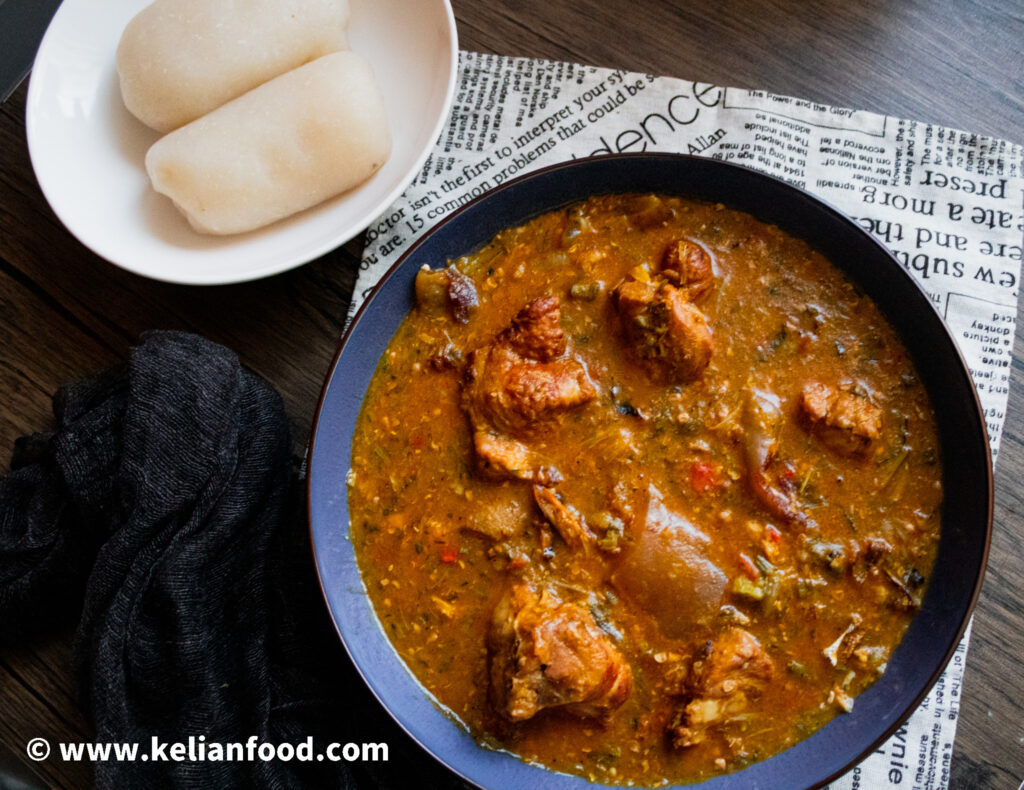
Check the recipe for tutorials here!
Placali is a couscous made from very simply fermented cassava . So you just have to soak your cassava for minimum 5 days and after crushing it. Then, it will take a sieving to get your dough. The dough will then be cooked over low heat, until you get the placali 😋. But otherwise, the Placali paste is also sold already made in the markets and in the Afoshops huh! You don't have to do all this process yourself 🤭
The placali can be accompanied with other sauces , but ate the placali with the Gombo sauce, is really more common in Côte d'Ivoire!
Check the recipe for placali here!
4- Akpessi Banana
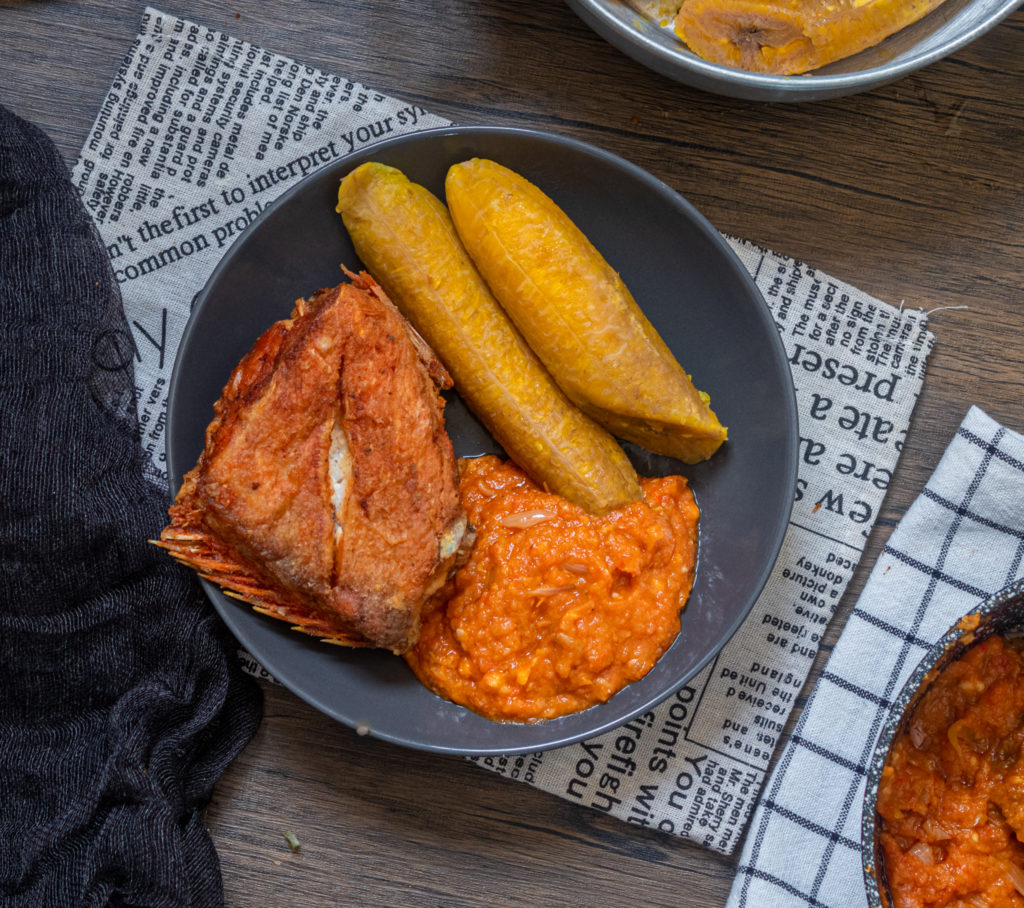
Akpessi is a traditional Ivorian dish . I read somewhere that the villagers generally serve this dish also in the morning at breakfast 🤭. I want to clarify that the “K” of Akpessi does not rule on pronunciation. We say “Apessi” . It is a simple sauce and very light elsewhere . It is cooked with African eggplant, tomatoes, onions and fish 😋.
This recipe is ideal for people who do not eat meat because the main ingredient remains the fish. Well, most of the time, we crumble the fish and mix it once with the sauce. But sometimes some prefer to fry the fish next to it and not mix it, as I did here! 😊
3- Foutou Seed sauce

The Foutou alone is a very popular complement in Côte d'Ivoire. You have probably noticed that most of the sauces I mentioned above are served with Foutou.
Foutou is made with cassava and plantain . Not to be confused with the Foufou eh! Because in Côte d'Ivoire there is a clear difference between the 2.. Besides, I wrote a small article on the subject. 🙂
Traditionally, you just have to boil the plantain and cassava together then pound with a mortar to get the Foutou. But nowadays, there are already the pre -made semolina. With the semolina, just turn with a little hot water to get the same result.
Personally I don't really like using the semolina. Instead of pounding with a mortar, which takes a lot of time 😅, I use a mixer robot to facilitate the task! And the result is just as delicious 😋!
Chec k the foutou recipe!
The foutou seed sauce , it was then foutou accompanied by a sauce called seed sauce . The seed sauce is made from palm nut juice . To which we add meat or fish and other vegetables. The seed sauce is also known in other African countries! It is the Moambean sauce in Congo, the Mbanga soup in Cameroon and Nigeria and Ghana it's Abenkwa !
The mixture of the 2, the Foutou + the seed sauce is so good, I assure you .. ouch! 😋 I squarely integrated this dish into my daily menus 🙂
Check the recipe for grai sauce !
2-Foutou Claire Sauce
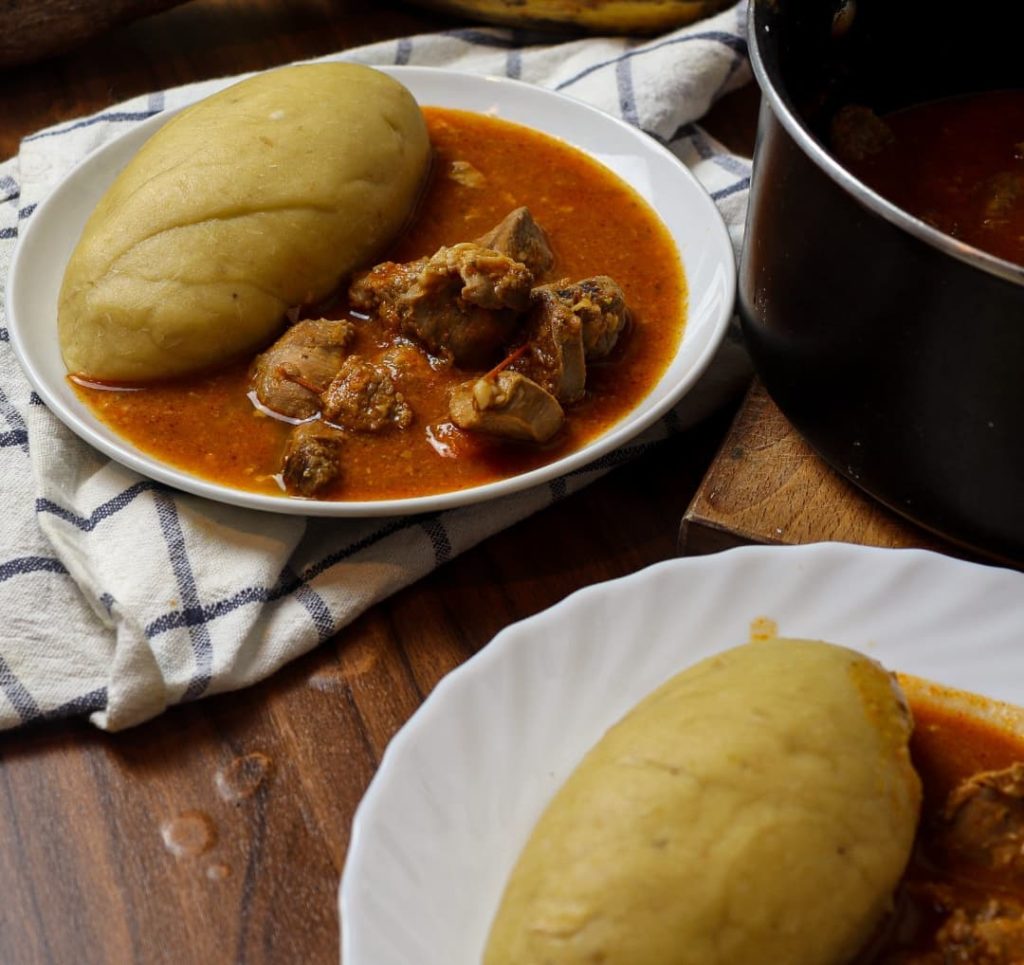
The Foutou Sauce Claire is simply Foufou but this time accompanied by the clear sauce. This very popular dish in Ivory Coast is true but also in Ghana, or it is called Light Soup . With me in Cameroon, this dish is unfortunately not known.
The clear sauce is a sauce made in a very simple way, not too much harassment 😄! The particularity of this sauce is that the vegetables are first cooked in steam before being crushed . This means that the sauce is not too liquid. You can choose to add the fish or the meat to your sauce, it depends on you 😋.
C heck the foutou recipe here!
1- Kedjeunou of chicken
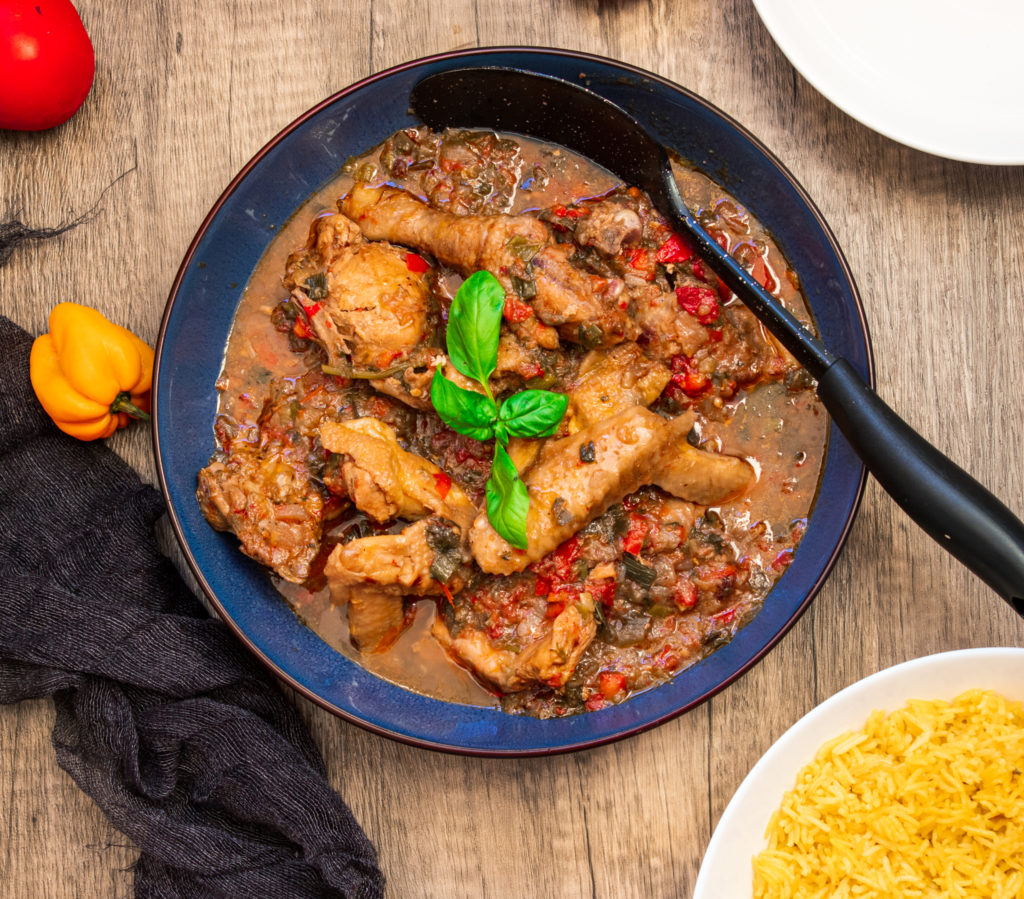
Kedjenou is in my opinion the house dish, the most popular in Côte d'Ivoire. It is simply a sauce made with chicken and several other vegetables . This dish is from the Baoulé people. The word kedjenou means: to shake in it because it was not possible to turn the sauce with a ladle!
Traditionally, chicken and vegetables were placed in a sort of pan, made of clay called Canaries . The mixture was tightly covered with banana leaves . It was therefore not even possible to add water. All he had to do was shake the pan from time to time, just so that the chicken does not stick to the bottom. Hence the name Kedjenou: shake in it. It's simple right? 😊 We accompany him with rice or attiéké .
In summary
This is the list of the 10 most popular houses in Côte d'Ivoire for me. I hope that like me, you learned some new dishes 😉.
There is surely more than one here, which will be surprised that I have not classified the Garba at the top of the 😄 list. Through my research, I learned that in fact that there are very few Ivorians who eat the garba as a house dish in the evening. The Garba is more a street dish . So I reserved it for the 3rd and last part of this mini article series. I invite you to subscribe to my newsletter so as not to miss my next publication. 🙂
If you are interested in knowing what we eat elsewhere, than in your country ... I invite you to read these other top 10 👇🏿😊
Hi, really thank you very much for your comment. Being a Cameroonian, it was not a long time to reduce this article 😊
I appreciate your publication on the revenues of the proposed Ivorian dishes.
Thank you too for your return
Hello,
very interesting!
THANKS
Hi and really thank you very much for your remark. Nooo! I take badly why? 😅 I am more delighted to learn and thanks to your comment, I will be able to modify my writings ☺ I am not Ivorian and suddenly it was not obvious for me to write this article.
Good morning. I just discovered you and I really appreciate this you do. On the other hand, there are many mistakes. Most of the dishes you have cited we don't add tomatoes. The onion goes by but not the tomato. Gouagouassou, Gnagnan for example. The seed sauce too. I hope that they are not going to take it in trouble.